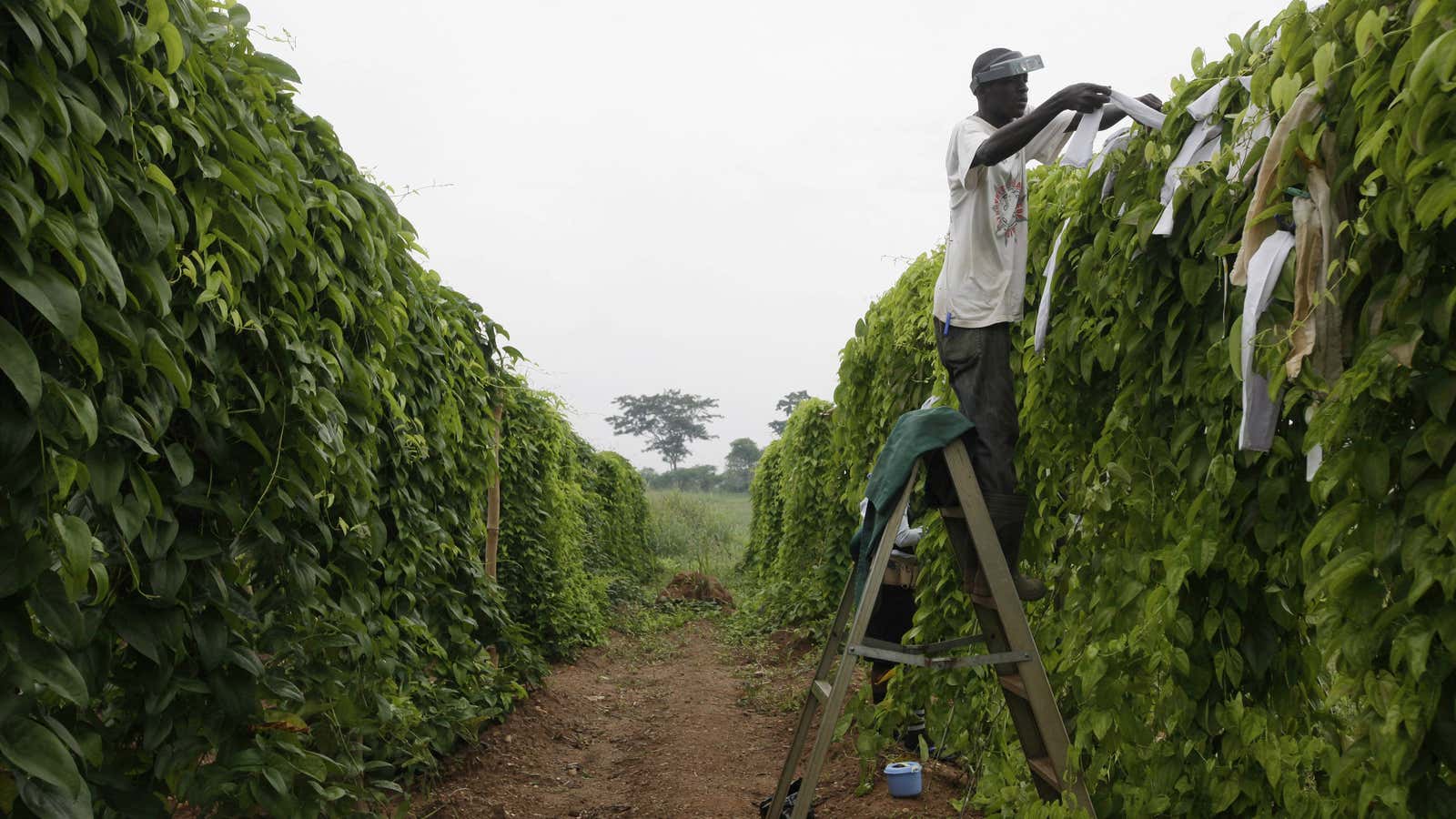On June 10th, the coalition of three regional economic communities (RECs), representing 26 African countries, 58% of the continent’s GDP, and a population of more than 600 million come together under the Tripartite Free Trade Area. Once signed into existence, the TFTP will represent more people than NAFTA or the European Union.
The TFTA’s aim is to promote development through increased economic integration of North, East, and South Africa; the project is part of a larger “regional integration strategy that places high priority on infrastructure development, industrialization, and free movement of business persons.” As it currently stands, Africa is the least economically integrated region in the world, as measured by intra-regional trade flows. Trade between African countries, as a share of the continent’s total trade has hovered at 10% for decades; the proportion in Europe and Asia, by contrast, is close to 60%.
African countries’ tendencies to trade more with non-African countries has had serious ramifications for continental integration and for continental economic development. Trade theory going all the way back to David Ricardo in the 18th century suggests that when two countries trade with one another, they focus their production efforts on the sorts of good that they have ‘comparative advantage’ in making. Current trade patterns in Africa promote specialization in primary commodities and agricultural goods; some suggest that increased trade within Africa could allow for a diversification of production profiles through the cultivation of other comparative advantages.
The creation of a regional body tasked with promoting economic integration in Africa to “reap efficiency gains” that come with free trade is a logical response to the paltry levels of intra-continental trade. The only problem is that it’s been done before in Africa – in fact, it’s been done a lot.
The African Union, itself a regional body dedicated to promoting peace and development in Africa, has sponsored the development of Regional Economic Communities, formally recognizing eight: the common Market for Eastern and Southern Africa (COMESA), the East African Community (EAC), Southern African Development Community (SADC), the Inter-Governmental Authority on Development (IGAD), the Economic Community of West African States (ECOWAS), the Community of Sahel-Saharan States (CEN-SAD), the Economic Community of Central African States (ECCAS), and the Arab Maghreb Union (UMA).
Participation in these bodies has been popular; a number of African countries belong to more than one REC, creating significant instances of overlapping trade arrangements and agreements. Of Africa’s 54 countries, 25 belong to two RECs, 17 are a member of three, and an additional six countries belong to four RECs.
Economic integration does not guarantee trade
Clearly, the existence of bodies to promote regional integration are insufficient to alter actual trade patterns; in fact, it striking that in 2010, only one REC exported goods more to Africa than to the European Union; IGAD has this honor, with only 18.8% of its exports bound for regional markets compared to 15.6% sent to the European Union. Unfortunately, all of the RECs reviewed by the African Development Bank in “Regional Trade and Integration in Africa” imported significantly more from the European Union than from other African countries.
Why have these bodies failed, despite their popularity? The dearth of transportation infrastructure within Africa, and the sorry state that existing networks are in, has been put forth as a significant hurdle. While that is undoubtedly true, these agreements also fail to recognize the incentives facing African producers. Many of the economies represented in these trade agreements are dominated by agricultural production; the UN Conference on Trade and Development notes “the narrowness of African production and export structures and relative dependence on primary commodities are inhibiting factors to the boosting of intraregional trade in Africa.”
Opening to trade with a country with very different economic characteristics will yield predictable results – however, for African farmers, opening to trade with their similarly agricultural neighbors is a fraught prospect. For example, in East Africa’s economic power-house Kenya, 64% of those polled by Afrobarometer believed that a “full-federation of the East African States” would make the “availability of jobs, markets, and trading opportunities” better or much better. Importantly, however, 22% of Kenyans polled were unsure of what the effects of regional integration would be. This pattern of response suggests that, while regional economic integration is broadly appealing, it is not fully understood.
Uncertainty of trade agreements
When considering increased trade between two agriculturally-dominant African countries, it is not immediately apparent which country will have the comparative advantage in their existing agricultural production – this uncertainty stunts regional economic integration.
Presently, agricultural producers in Africa are among the continent’s most economically protected groups. The Overall Trade Restrictiveness Index found that total trade in Sub-Saharan Africa faced 14.4% tariff rates, with agricultural goods facing an average tariff rate of 24.9%. The dismantling of these protections will almost certainly be politically difficult, given agricultural production’s broad base in African countries.
If the TFTP is to succeed, it must do what its predecessors have thus far failed to do: in addition to marshaling support for intra-continental infrastructure investment, it must reduce the uncertainty facing African agricultural producers. This will require the development of compensatory mechanisms for those who lose from the introduction of free trade. Unfortunately, the lack of state capacity in a number of the TFTP’s member-states will problematize or prevent implementation of these programs. It would appear that the key to regional integration may lay in improved domestic political capacities.
